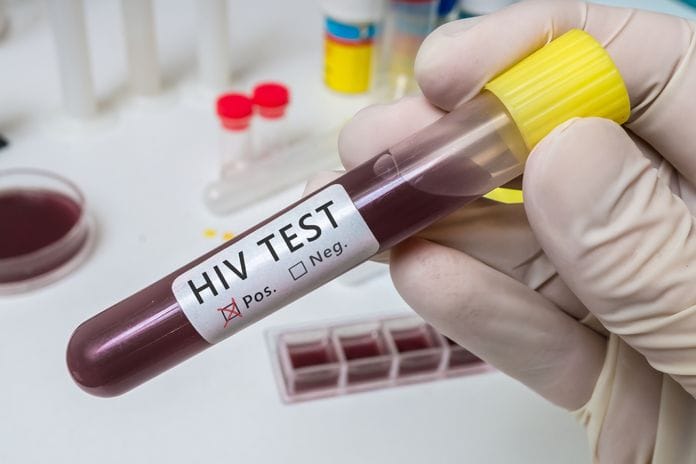Human Immunodeficiency Virus (HIV) became an epidemic in the United States in the early 1980s causing great concern for many healthcare workers. Today, after almost forty years of research, infection control guidelines and universal standard precautions are set in place due to the epidemic to ensure clinicians and patients are protected with proper PPE, no matter their health status. For those infected with HIV, medical advances now also allow longer, more normal lives. These patients do not warrant any special treatment or sterilization precautions but may experience more oral manifestations or complications from comorbidities associated with HIV over time.
Non-Hispanic American Indians and Alaska Natives have the highest rates of infection after Non-Hispanic Blacks whose rates doubled from 22 per 100,000 to 45 per 100,000 from 2010-20162. However, overall HIV cases showed a 10% decline from 41,900 new cases in 2010 to 37,600 in 20145. Past data has led to the general acceptance that exposure risk for healthcare workers, like dental hygienists, is 0.3% after a percutaneous exposure and 0.09% with a mucous membrane exposure.
The University of Pittsburgh conducted a study from 2002-2015 monitoring an occupational injury database which included 266 reported exposures. 52.6% of the injuries were percutaneous and 43.2% mucocutaneous. Injuries were to the hand, face, or neck and blood exposure was involved in 64.3% of the cases. Post-exposure prophylaxis of antiretroviral drugs was given to 21.1% of exposed healthcare workers, and ultimately seroconversion rates were 0% with none of the cases resulting in an HIV infection7. Post-exposure prophylaxis antiretroviral drugs may be administered within 72 hours of exposure to help prevent infection, but it seems exposure risks may be less than previously calculated6.
Universal precautions are infection control recommendations implemented during the HIV/AIDS epidemic. These standards minimize the risk of exposure to dental hygienists and their patients. Patients may choose not to disclose vital information about their health status or may not yet be aware of infection. The Organization for Safety, Asepsis, and Prevention (OSAP) recommends the same sterilization and infection control precautions be used for every patient regardless of health status3. The CDC offers a printable dental office guide outlining safe practices for instrument processing, hand hygiene, safe injection practices, and more5.
Medical advances and drug treatments have brought life expectancy to near normal for HIV positive patients in recent years. Health history questions should include CD4 levels, which are an indicator of immune status, and viral load indicating the effectiveness of antiretroviral therapies. This information can help dental hygienists understand current health and the risk of HIV progression. There has not been any data to support antibiotic prophylaxis for HIV positive patients for any CD4 level except in cases of severe neutropenia (white blood cell count <500 cells/mm3). There are also no contraindications to the use of local anesthetics in patients with HIV2. In good oral health, patients may be seen for normal 6-month recare, but if severely immunocompromised (CD4<100) a 3-month recare may be a better option.
HIV is associated with a higher risk of several comorbidities such as sexually transmitted infections, diabetes, hepatitis C and B, and cardiovascular disease. Antiretroviral drugs have been associated with increases in peripheral and coronary arterial disease. HIV must be treated from more than one direction to effectively decrease viral load. In turn, HIV medications are generally multiclass combination drugs containing two or more drugs in one pill2.
Below are several classes of drugs used to treat patients living with HIV:
- Integrase inhibitors: Integrase is a viral enzyme HIV uses to infect T-cells.
- Nucleoside/nucleotide reverse transcriptase inhibitors (NRTIs): Works by interrupting the HIV life cycle and prevents replication in the body.
- Non-nucleoside reverse transcriptase inhibitors (NNRTIs): Stops replication in the body.
- Protease inhibitors: Binds to protease to inhibit use by HIV and prevent replication.
- Entry and fusion inhibitors: Prevents entry of HIV to host T-cells and replication.
- Chemokine co-receptor antagonists (CCR5 antagonists): Blocks HIV from entering cells.
- Cytochrome P4503A (CYP3A) inhibitors: Contain protease and integrase inhibitors, protects the liver and gastrointestinal health by increasing levels of HIV drugs.
- Pre-exposure Prophylaxis (PrEP): With correct use, reduces HIV transmission by 92%. May be used by HIV positive patients to prevent transmission and may also be taken by HIV negative partners to prevent infection8.
Beside medication induced issues, those living with HIV have also reported diminished taste (hypogeusia), or phantom metallic, sour, bitter, and foul tastes (dysgeusia)2.
Below are a few other common examples of oral complications of HIV and associated comorbidities:
- Xerostomia: 10-30% of HIV infected patients develop xerostomia. Management may involve a range of OTC mouth rinses, lozenges, and gums to interventions for more severe cases involving prescriptions like SalivaMAX and Neutrasal that mimic saliva composition2.
- HIV-Salivary Gland Disease: 5% of patients develop bilateral salivary gland enlargement. Imaging and biopsy may be needed to rule out lymphoma or Kaposi’s sarcoma, and then HIV-SGD may be treated with antibiotics.
- Kaposi’s Sarcoma: Can be the first presentation of AIDS but has also been found in non-HIV positive males. It is the most common oral malignancy in HIV-positive patients and is associated with a sexually transmitted virus. Early Kaposi’s sarcoma is flat, painless, and purple or red in color.
- Linear Gingival Erythema (LGE): Generally associated with low CD4 count. Presents as established marginal gingivitis and a distinct linear red band of marginal attached gingiva. There is no pain, ulceration or attachment loss. LGE may not resolve with SRP or good oral hygiene, and these patients may be placed on 3-month recare and a chlorhexidine regimen. More aggressive cases require topical or systemic antifungal agents be added to a chlorhexidine regimen. Untreated this condition may progress to NUG/NUP2.
- Periodontal disease: There are not any marked differences in the development and progression of periodontal disease between HIV and non-HIV infected patients except clinical markers for inflammation. In one study, papilla bleeding scores were double in those HIV patients not being treated with an antiretroviral than those who were4. Another longitudinal study included 73 HIV positive patients with severe periodontitis on antiretroviral therapy showing low CD4 counts. After non-surgical intervention, these patients showed reduced inflammation and improved CD4 counts after 12 months9.
HIV is a chronic complex disease. Dental hygienists can be an integral part of the HIV infected patients network of providers. We are also in a unique position to spread awareness and educate, and even refer for testing. Testing options near you may be found by clicking here. Additionally, the Ryan White Foundation is a wonderful resource. If qualified, this organization provides essential dental insurance benefits and oral hygiene items to those living with HIV who cannot afford access to dental care1.
SEE ALSO: Why Dental Hygienists Should NEVER Treat Patients with Active Oral Herpes
DON’T MISS: The Flu and Dental Care: A Closer Look
Now Listen to the Today’s RDH Dental Hygiene Podcast Below:
References
- (2017, February 03). The Ryan White HIV/AIDS Program: The Basics. Retrieved from https://www.kff.org/hivaids/fact-sheet/the-ryan-white-hivaids-program-the-basics/
- Abel, S. N., D.D.S., M.S., Croser, D., B.D.S., D.G.D.P., Fischman, S. L., D.M.D., Glick, M., D.M.D., & Phelan, J. A., D.D.S. (2000). Principles of Oral Health Management for the HIV/AIDS Patient. Retrieved June 9, 2018, from https://aidsetc.org/sites/default/files/resources_files/Princ_Oral_Health_HIV.pdf
- FAQ’s Sterilization – OSAP. (n.d.). Retrieved June 16, 2018, from https://www.osap.org/general/custom.asp?page=faq_instrum_ster1#shouldahandpiece
- Fricke, U., Geurtsen, W., Staufenbiel, I., & Rahman, A. (2012). Periodontal status of HIV-infected patients undergoing antiretroviral therapy compared to HIV-therapy naive patients: A case-control study. Retrieved June 9, 2018, from https://www.ncbi.nlm.nih.gov/pmc/articles/PMC3337541/?report=reader
- HIV/AIDS. (2017, November 29). Retrieved June 5, 2018, from https://www.cdc.gov/hiv/statistics/overview/ataglance.html
- Human Immunodeficiency Virus (HIV). (n.d.). Retrieved June 5, 2018, from https://www.ada.org/en/member-center/oral-health-topics/hiv
- Nwaiwu, C. A., Egro, F. M., Smith, S., Harper, J. D., & Spiess, A. M. (2017, August 01). Seroconversion rate among health care workers exposed to HIV-contaminated body fluids: The University of Pittsburgh 13-year experience. Retrieved June 16, 2018, from https://www.ncbi.nlm.nih.gov/pubmed/28449921
- PleasePrEPMe. (n.d.). Retrieved June 15, 2018, from https://www.pleaseprepme.org/
- Valentine, J., Sanders, A. E., Saladyanant, T., Ramsey, K., Blake, J., Morelli, T., et. al. Webster-Cyriaque, J. (2016, April). Impact of Periodontal Intervention on Local inflammation, Periodontitis and HIV Outcomes. Retrieved June 9, 2018, from https://www.ncbi.nlm.nih.gov/pmc/articles/PMC4899823/#!po=35.1852











